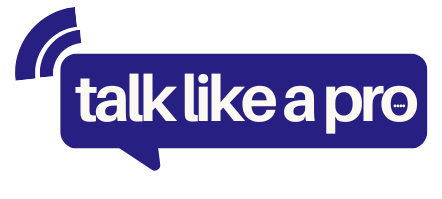Well, well, well… Look who’s here to master the ancient art of pretending to listen!
You, my dear reader, are about to embark on a journey into the fascinating world of fake attentiveness.
By the end of this article, you’ll be equipped with the skills to nod and smile your way through any conversation, no matter how mind-numbingly dull.
I’ve spent years perfecting this technique, much to the chagrin of my friends and family.
But fear not! I’ve consulted with fellow experts in the field of selective hearing to bring you the crème de la crème of feigned interest.
Whether you’re stuck in a never-ending meeting, cornered by a chatty neighbor, or subjected to your partner’s detailed recounting of their day, these tips will be your secret weapon.
So buckle up, buttercup! It’s time to become the master of the “uh-huh” and the champion of the vacant stare.
The Foundation of Faux Listening
Let’s start with the basics, shall we?
The cornerstone of pretending to listen is the classic nod and smile combo.
It’s like the peanut butter and jelly of fake attentiveness – simple, yet effective.
The Art of the Nod
Ah, the nod.
It’s not just for agreeing anymore, folks!
A well-timed nod can convey understanding, empathy, and interest – even when your mind is a million miles away.
The key is to vary your nods.
Mix it up!
Throw in a slow, thoughtful nod followed by a quick, enthusiastic one.
It’s like a dance, really. A beautiful, deceptive dance.
PRO TIP: For extra credit, furrow your brow slightly while nodding.
It makes you look like you’re REALLY considering what they’re saying.
Oscar-worthy performance, here we come!
The Smile: Your Secret Weapon
Now, let’s talk about that smile.
It’s not just about showing teeth, people.
It’s about convincing the world that you’re THRILLED to be hearing about your coworker’s cat’s dietary habits.
The trick is to master the “interested smile.”
It’s a delicate balance between “I’m engaged” and “I’m not a serial killer.”
Practice in the mirror.
Your future self will thank you.
WARNING: Be careful not to overdo it.
A constant, unwavering smile can make you look like a deranged clown.
And trust me, that’s NOT the vibe we’re going for here.
Advanced Techniques for the Aspiring Faker
Okay, hotshot.
You’ve got the basics down.
Time to level up your game with some advanced moves.
The Strategic “Mm-hmm”
The “mm-hmm” is the Swiss Army knife of fake listening.
It’s versatile, it’s subtle, and it can get you out of almost any sticky situation.
But beware!
Timing is everything.
Drop an “mm-hmm” at the wrong moment, and you might accidentally agree to host the next family reunion.
(Trust me, I speak from painful experience.)
Try varying your tone.
A low, thoughtful “mm-hmm” suggests deep contemplation, while a higher-pitched one conveys surprise or excitement.
Mix and match for maximum believability!
The Reflective Pause
Want to really sell your fake attentiveness?
Try the reflective pause.
It’s simple: when the other person finishes speaking, don’t respond immediately.
Take a moment.
Look pensive.
Maybe even stroke your chin if you’re feeling extra dramatic.
This move says, “Wow, what you just said was SO profound, I need a moment to process it.”
Meanwhile, your brain can be planning your grocery list or mentally rewatching that last episode of “The Office.”
Body Language: The Silent Screamer
Remember, folks, communication is more than just words.
Your body language can either be your greatest ally or your biggest betrayer in the art of fake listening.
The Lean
Leaning slightly towards the speaker is like saying, “I’m SO into this conversation” without actually having to say it.
It’s effortless, it’s subtle, and it works like a charm.
Just be careful not to lean too far.
We want “interested listener,” not “person about to topple over.”
The Head Tilt
Ah, the head tilt.
It’s not just for confused puppies anymore!
A slight tilt of the head conveys curiosity and engagement.
Plus, it gives your neck a nice stretch.
Win-win!
Combine the head tilt with a squint for maximum effect.
It’s like saying, “Your words are SO fascinating, I need to physically alter my perspective to fully appreciate them.”
Verbal Judo: Redirecting the Conversation
Sometimes, nodding and smiling just isn’t enough.
You need to contribute SOMETHING to the conversation to maintain the illusion of attentiveness.
But fear not!
I’ve got some foolproof techniques to keep you in the game without actually having to pay attention.
The Echo Chamber
This move is simple but effective.
Just repeat the last few words the other person said, but in a question format.
For example:
Them: “…and then the dog ate my entire stamp collection!”
You: “Your entire stamp collection?”
BOOM.
You’re engaged, you’re interested, and you have NO idea what’s actually going on.
The Generic Response Arsenal
Stock up on these babies, and you’ll never be caught off guard again:
- “That’s really interesting!”
- “I never thought about it that way before.”
- “Wow, what happened next?”
- “How did that make you feel?”
These responses work in almost ANY situation.
They’re the duct tape of conversation – not pretty, but they’ll hold things together in a pinch.
The Emergency Escape Hatch
Look, sometimes even the best of us get caught.
Maybe you zoned out a little TOO hard, or your fake interest wasn’t quite Oscar-worthy.
It happens to the best of us.
But fear not!
I’ve got some emergency tactics to save your bacon.
The Honest Approach
Sometimes, honesty really is the best policy.
If you get caught not listening, try something like:
“I’m so sorry, my mind wandered for a moment there.
Could you repeat that last part?
I really want to make sure I understand.”
It’s disarming, it’s humble, and it might just save your relationship/job/sanity.
The Distraction Gambit
When all else fails, create a diversion!
Spill your coffee, “accidentally” knock something over, or clutch your stomach and make a dash for the bathroom.
Is it mature?
No.
Is it effective?
Absolutely.
The Ethical Dilemma: To Fake or Not to Fake?
Alright, let’s get serious for a moment.
(I know, I know, it’s not as fun.
But bear with me.)
As hilarious and useful as these techniques can be, it’s important to recognize when it’s appropriate to use them and when it’s not.
When It’s Okay to Fake It
There are times when a little fake listening can actually be beneficial:
- In social situations where you’re overwhelmed and need a mental break
- During long, drawn-out meetings where not every point is relevant to you
- When someone is venting and just needs to feel heard
In these cases, your pretend attentiveness can actually be a kindness.
When You Need to Tune In
However, there are definitely times when you need to put away the fake listening toolkit and genuinely engage:
- During important conversations with loved ones
- When receiving crucial information at work
- In any situation where your input or understanding is truly needed
Remember, while fake listening can be a useful skill, genuine connection and understanding are irreplaceable.
The Grand Finale: Becoming a Fake Listening Virtuoso
Congratulations!
You’ve made it through Fake Listening 101.
You’re now equipped with an arsenal of techniques to nod, smile, and “mm-hmm” your way through even the most tedious of conversations.
But remember, with great power comes great responsibility.
Use your newfound skills wisely, young grasshopper.
Practice makes perfect, so don’t be afraid to test out your moves.
That chatty neighbor?
Perfect training ground.
Your partner’s detailed account of their day?
A golden opportunity to hone your craft.
And who knows?
Maybe along the way, you’ll discover that some of those conversations you’ve been tuning out are actually pretty interesting.
(But let’s be real, probably not ALL of them.)
So go forth, my fake listening padawans.
Nod with confidence, smile with conviction, and may the force of feigned interest be with you always.
Just remember: if all else fails, there’s always the tried-and-true method of sticking your fingers in your ears and yelling “LA LA LA, I CAN’T HEAR YOU!”
It may not be subtle, but it’s certainly effective.
Now, if you’ll excuse me, I have to go practice my “deeply interested” face in the mirror.
It’s not easy being this good at not listening, you know!




